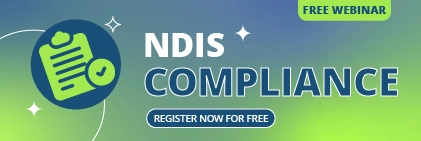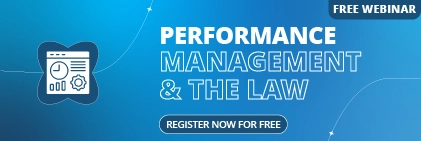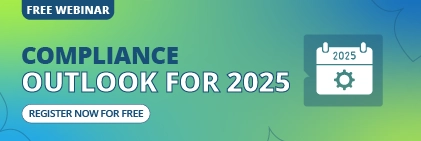In today’s business environment, HR professionals face growing challenges in maintaining workplace compliance. With regulations constantly evolving and penalties for non-compliance increasing, staying on top of HR compliance has never been more crucial.
This guide explores the five most significant compliance challenges that HR teams encounter daily, offering practical insights and solutions to navigate these complex waters successfully.
What Is HR Compliance and Why Does It Matter?
HR compliance refers to an organisation’s adherence to laws and regulations governing employment practices, workplace safety, and employee rights. It encompasses everything from anti-discrimination policies to data privacy regulations and workplace health standards.
For businesses, compliance isn’t merely a box-ticking exercise, it’s fundamental to organisational success and sustainability. Proper compliance:
- Shields your business from costly legal disputes and financial penalties
- Protects your company’s reputation in the marketplace
- Creates a safer, more equitable workplace environment
- Fosters employee trust and engagement
- Reduces turnover and improves productivity
Recent statistics reveal that businesses face millions in compliance-related penalties annually.
Challenge #1: Keeping Pace with Rapidly Evolving Legislation
The Ever-Changing Legal Landscape
Perhaps the most daunting challenge for HR professionals is staying current with continually evolving employment laws and regulations. From amendments to the Fair Work Act to workplace health and safety updates, the regulatory environment shifts constantly.
Common difficulties include:
- Tracking amendments to employment laws and industry awards
- Understanding implications of court precedents on workplace practices
- Adapting to changes in superannuation and taxation requirements
- Implementing updates to privacy legislation
- Navigating regional variations in employment law across Australian states and territories
Real-World Impact
In recent years, Australian employment legislation has seen numerous significant amendments, requiring HR departments to review and update policies regularly. Many businesses find themselves playing catch-up, often discovering compliance gaps only after issues arise. According to recent reports, significant legislative changes are introduced each year.
Best Practice Solution
Implementing a systematic approach to legislative monitoring is essential. This includes:
1. Subscribing to regulatory update services
2. Establishing a regular compliance review calendar
3. Building relationships with legal advisors specialised in employment law
4. Utilising compliance management systems with automatic update features
5. Conducting quarterly compliance audits
With Sentrient’s automatic regulatory updates, your organisation can stay current with evolving Australian workplace laws without the constant manual monitoring that drains HR resources. </p >
Challenge #2: Managing Employee Data Privacy and Security
The Privacy Imperative
With increased digitalisation of HR processes, protecting employee data has become increasingly complex. Organisations must comply with data protection regulations, including the Privacy Act 1988 and its Australian Privacy Principles (APPs), with some also needing to consider international privacy frameworks.
HR departments typically handle vast amounts of sensitive personal information, including:
- Financial details and tax information
- Health information and medical records
- Performance evaluations and disciplinary records
- Background check results
- Diversity and inclusion data
The Stakes Are High
Data breaches involving employee information can be catastrophic. Recent years have seen organisations suffer significant financial and reputational damage from data breaches, with HR systems increasingly targeted by cybercriminals. Based on the latest IBM Cost of a Data Breach Report, the average cost of a data breach in Australia reached AUD 4.26 million in 2024.
Best Practice Solution
Developing robust data governance frameworks is no longer optional. Solutions should at least offer:
1. Implementing role-based access controls for HR information
2. Conducting regular security assessments of HR systems
3. Providing data handling training for all staff with access to employee information
4. Creating clear data retention and destruction policies
5. Documenting all data processing activities </p
Sentrient’s secure policy management platform helps organisations maintain compliance with privacy regulations by ensuring appropriate access controls and providing comprehensive audit trails for all compliance activities.
Challenge #3: Preventing Workplace Discrimination and Harassment
The Equality Imperative
Workplaces are legally bound to provide environments free from discrimination, harassment, and bullying. Yet despite increased awareness, complaints to the Australian Human Rights Commission and Fair Work Commission continue to rise year after year. Recent data shows workplace discrimination complaints have increased in the past year.
HR professionals face significant challenges in:
- Ensuring fair recruitment and promotion practices
- Addressing unconscious bias in workplace decision-making
- Managing complaints effectively and transparently
- Creating inclusive workplaces for diverse employees
- Providing reasonable accommodations when required
The Cultural Component
Beyond legal compliance, preventing discrimination requires cultural transformation. Many organisations struggle to move beyond policy documents to create genuinely inclusive environments.
Best Practice Solution
A multi-faceted approach is required:
1. Implementing regular, interactive training on discrimination and harassment
2. Developing clear reporting mechanisms and investigation procedures
3. Conducting anonymous workplace culture surveys
4. Establishing diversity and inclusion committees with executive sponsorship
5. Regularly reviewing recruitment and promotion data for potential bias
Sentrient’s comprehensive training modules on discrimination and harassment help organisations build a culture of respect while meeting their legal obligations under relevant Australian legislation.
Challenge #4: Compliance with Employee Benefits and Leave Entitlements
The Entitlement Complexity
Managing employee leave and benefits compliantly is astonishingly complex in Australia, where entitlements are governed by a combination of national standards, industry awards, enterprise agreements, and individual contracts.
Common compliance pitfalls include:
- Miscalculating leave accruals and entitlements
- Mishandling flexible working arrangements
- Incorrect classification of employee vs contractor
- Underpayment of wages and retirement contributions
- Poor documentation of agreements and arrangements
The Cost of Getting It Wrong
Wage underpayment scandals have dominated Australian business headlines in recent years, with major organisations facing multimillion-dollar remediation costs and severe reputational damage. Here are the major cases and their wage underpayments according to the Fair Work Ombudsmen:
| Year | Notable Cases | Estimated Underpayments |
|---|---|---|
| 2022 | 12 major cases | AUD 1.2 billion |
| 2023 | 15 major cases | AUD 1.5 billion |
| 2024 (Q1) | 5 major cases | AUD 500 million |
Best Practice Solution
Systematic compliance requires:
1. Implementing robust time and attendance tracking systems
2. Regularly auditing payroll calculations
3. Documenting all leave arrangements and flexible work agreements
4. Providing manager training on entitlement obligations
5. Creating clear processes for handling employment classification decisions
Sentrient’s policy management tools help organisations document and communicate their obligations under the National Employment Standards, relevant Modern Awards, and enterprise agreements, reducing the risk of costly underpayment claims.
Challenge #5: Workplace Health and Safety Obligations
The Safety Imperative
Workplace Health and Safety (WHS) laws impose substantial obligations on organisations to provide safe working environments. With increasing focus on psychological safety alongside physical hazards, HR professionals face expanding responsibilities.
Key compliance challenges include:
- Conducting comprehensive risk assessments
- Implementing appropriate control measures
- Managing return-to-work processes after injuries
- Addressing psychosocial hazards like stress and burnout
- Maintaining required documentation and reporting
Beyond Compliance to Prevention
The most effective organisations move beyond reactive compliance to proactive safety management, recognising that prevention delivers both human and financial benefits. According to Safe Work Australia, workplace injuries cost the Australian economy billions annually, with significant impacts on productivity and employee wellbeing.
Best Practice Solution
A holistic safety framework includes:
1. Developing a safety-first organisational culture
2. Implementing regular hazard identification processes
3. Providing role-specific safety training
4. Creating effective incident reporting mechanisms
5. Conducting regular compliance audits against WHS regulations
Sentrient’s WHS training and incident management tools help organisations meet their obligations under the model WHS laws adopted across most Australian jurisdictions, including the critical duty of care to provide a safe working environment.
The Technology Solution to Streamline HR Compliance
While compliance challenges are complex, technology offers powerful solutions. Modern compliance management systems provide integrated tools that significantly reduce the administrative burden while improving compliance outcomes.
Key benefits include:
- Centralised policy management and distribution
- Automated training assignment and tracking
- Real-time compliance reporting and analytics
- Streamlined incident management workflows
- Comprehensive audit trails for regulatory inspections
Implementation Considerations
When selecting a compliance management system, organisations should consider:
1. Relevance to local regulations: Does the system specifically address your Australian compliance requirements?
2. Integration capabilities: Will it work with existing HR and payroll systems?
3. Scalability: Can it grow with your organisation?
4. User experience: Is it intuitive for both administrators and employees?
5. Support quality: Is localised support available when needed?
How Sentrient Can Help
At Sentrient, we understand the unique compliance challenges facing Australian businesses. Our comprehensive compliance management system is designed specifically for Australian workplaces, with solutions that address all five key challenges discussed in this article.
Our platform helps organisations:
- Stay current with evolving Australian regulations through automatic updates
- Streamline policy management with easy distribution and tracking
- Deliver engaging, legally endorsed compliance training
- Manage incidents effectively and confidentially
- Generate comprehensive compliance reports for stakeholders
Conclusion
While HR compliance challenges may seem daunting, addressing them effectively can transform them into competitive advantages. Organisations with strong compliance frameworks typically experience:
- Improved workplace culture and employee satisfaction
- Reduced staff turnover and associated costs
- Enhanced reputation among customers and potential employees
- Lower risk of costly penalties and legal disputes
- More time for HR to focus on strategic initiatives
The key to success lies in developing systematic, proactive approaches to compliance rather than reacting to issues as they arise.
Ready to transform your organisation’s approach to HR compliance?
Book a demo today to discover how Sentrient can help your business create a safer, more compliant workplace in line with Australian regulations.
FAQs
1. What are the biggest compliance risks for HR departments?
The most significant compliance risks include wage underpayment, workplace discrimination, WHS violations, privacy breaches, and failing to keep pace with legislative changes. Each carries potential financial penalties, reputational damage, and operational disruption.
2. How often should we review our HR policies for compliance?
Best practice suggests quarterly reviews of high-risk policies (such as WHS and discrimination) and at least annual reviews of all other policies. Additionally, policy reviews should be triggered by relevant legislative changes or significant organisational shifts.
3. What documentation should we maintain for compliance purposes?
Essential documentation includes employment contracts, policy acknowledgements, training records, incident reports, risk assessments, reasonable adjustment records, and evidence of consultation on workplace changes. Maintaining these records in a centralised system significantly simplifies compliance management.
4. How can we ensure employees understand compliance requirements?
Regular, engaging training is essential. Modern approaches include microlearning, scenario-based training, and multimedia content delivered through learning management systems. Training should be reinforced through consistent messaging from leadership and practical application in daily work.
5. What’s the first step to improving our compliance management?
Begin with a comprehensive compliance audit to identify gaps in your current processes. This should assess policy documentation, training programs, incident management procedures, and record-keeping practices. From there, develop a prioritised action plan addressing the highest-risk areas first.





